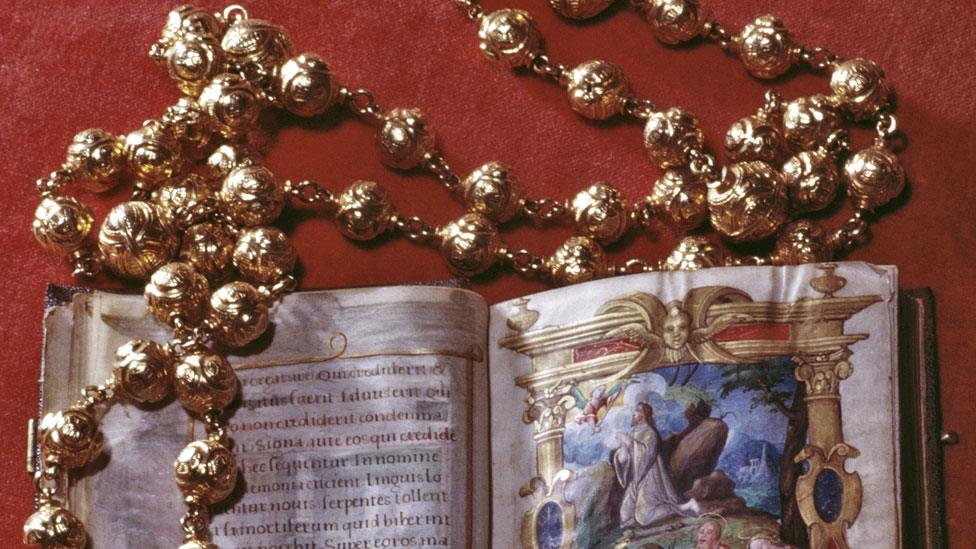Arundel Castle: Ladders found in Mary Queen of Scots beads theft
- Published
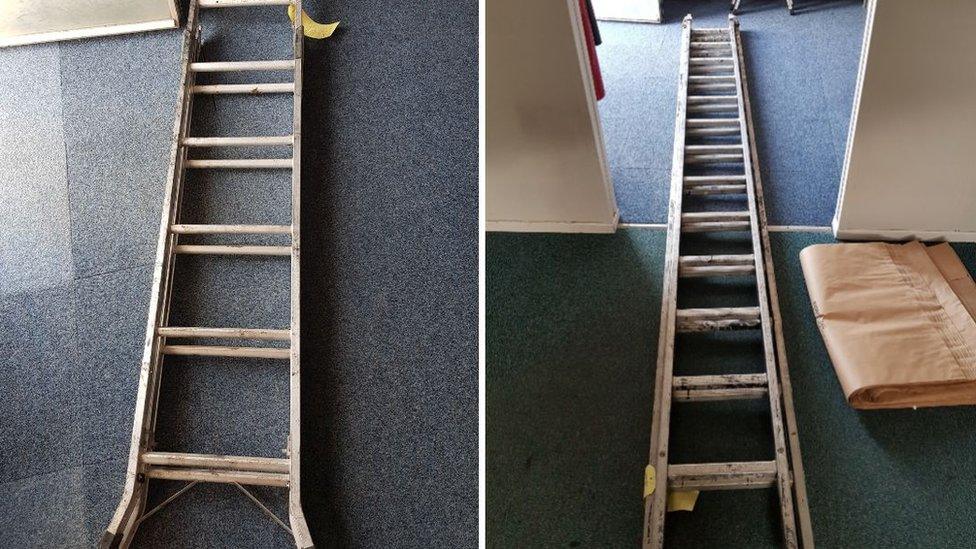
Thieves used two ladders and forced open a window, police say
Police have released images of ladders used by thieves to break into Arundel Castle and steal historic artefacts worth more than £1m.
A set of gold rosary beads carried by Mary Queen of Scots at her execution in 1587 was among items taken on 21 May.
Police hope the owners of the paint-splattered ladders will "realise that they are now missing" and come forward.
The stolen artefacts were of "priceless historical importance", a spokesman for the castle said.
Officers arrived at the scene in West Sussex within minutes of being called by staff who were alerted by a burglar alarm at about 22:30 BST, police said.
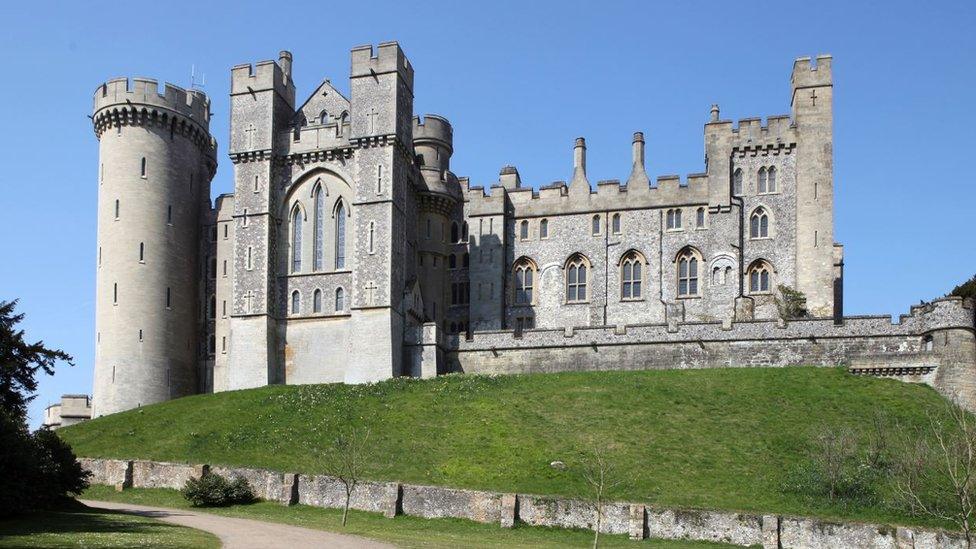
The raid happened days after Arundel Castle reopened to the public
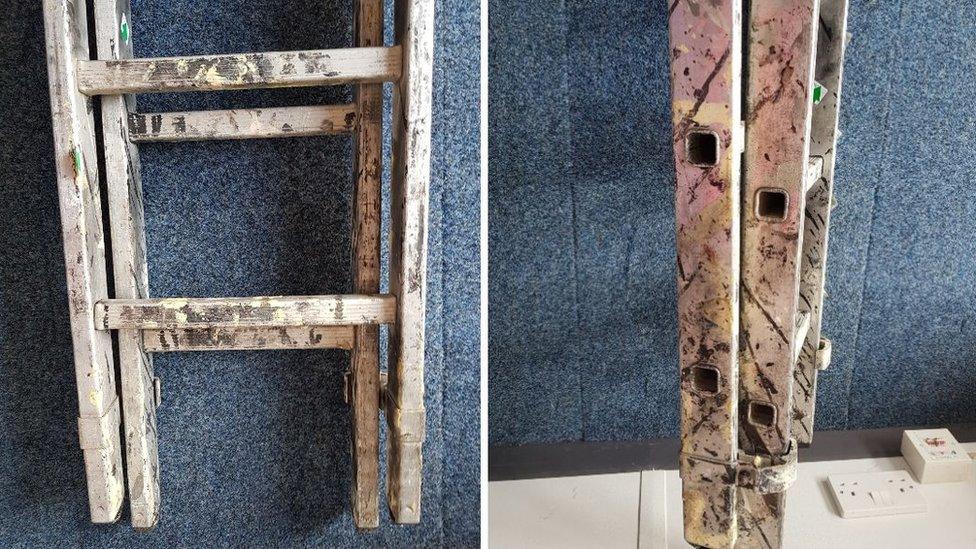
Police hope the owners of the well-used ladders will come forward
The ladders had been used to access to the dining room area, where thieves forced a window to gain entry, Sussex Police said.
The stolen items - which also included several coronation cups given by Mary to the Earl Marshal - were taken from a display cabinet in an area of the castle that is usually open to the public.
The gold rosary is of "little intrinsic value as metal" but as a piece of "the nation's heritage it is irreplaceable," police said.
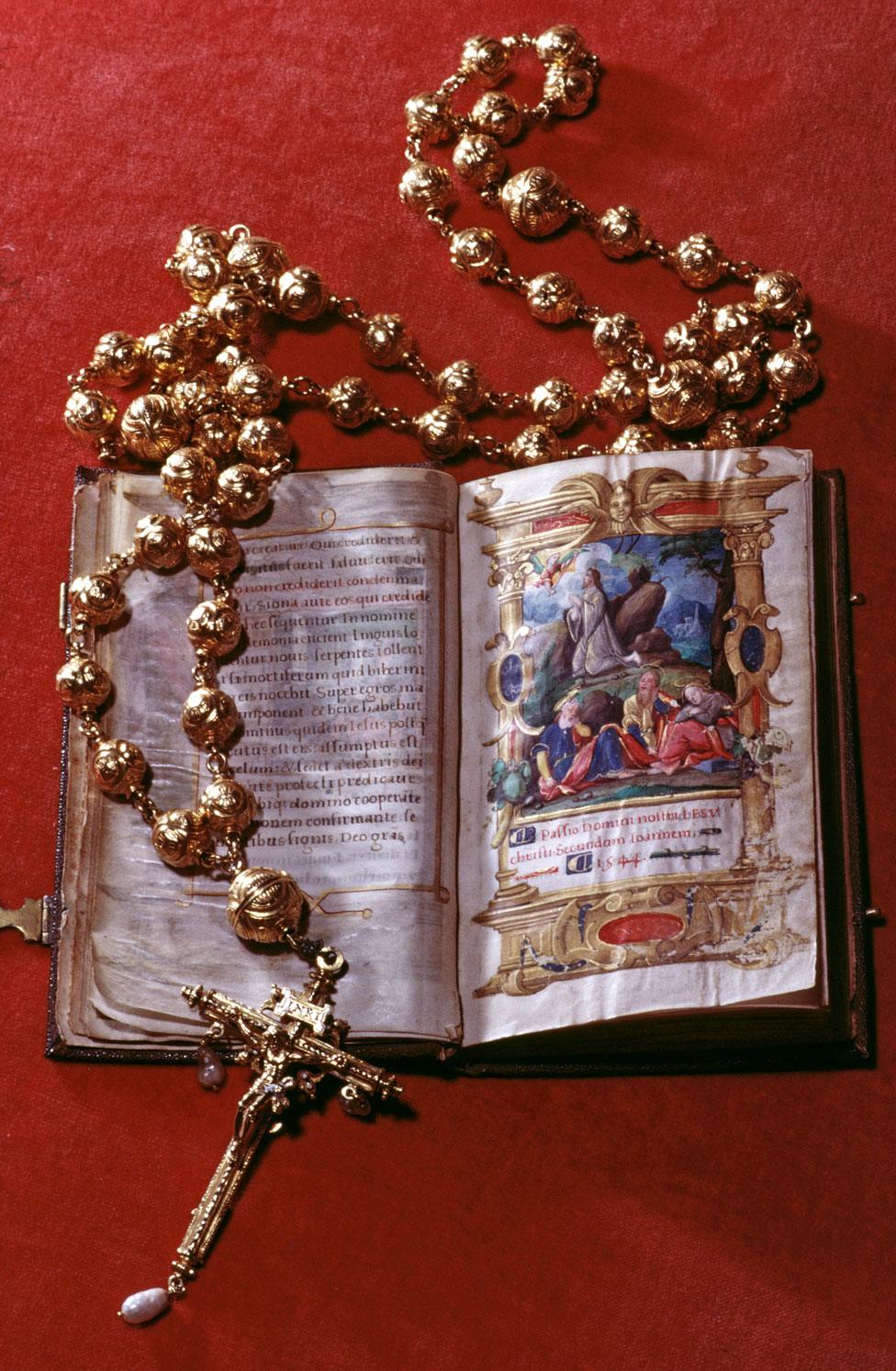
The rosary beads were carried by Mary as she was led to her death
Det Insp Alan Pack said: "The ladders have clearly been well used over some years. The long ladder has distinctive black and yellow paint splashings and each has some worn labelling.
"We hope that someone in the decorating or building trade, or maybe someone who just had them at home, will realise that they are now missing them, and will contact us."
Reacting to news of the theft last month, Professor Kate Williams of Reading University said that most of the monarch's belongings had been "despoiled" or burned after she was executed.
"We had one tiny memorial of Mary Queen of Scots - and now it has gone," she said.

Who was Mary, Queen of Scots?
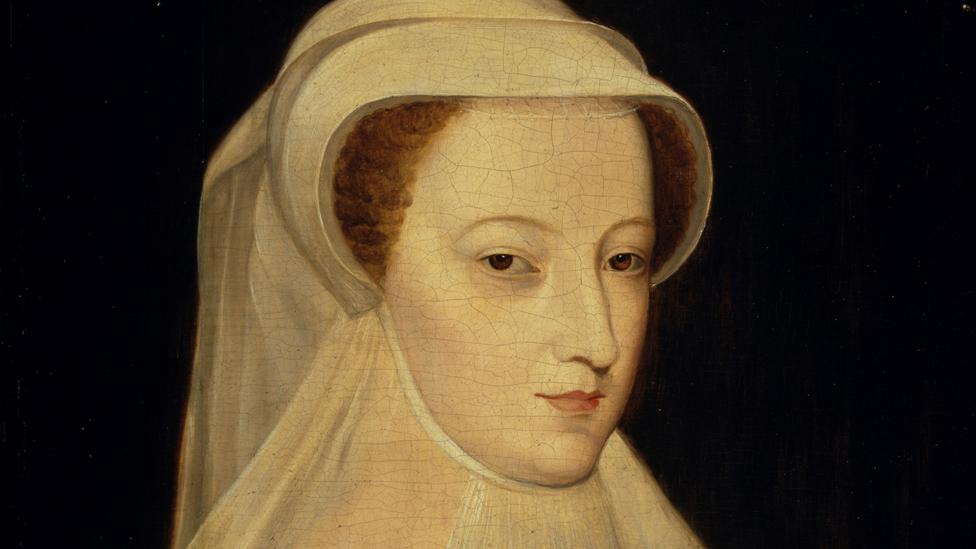
Mary Queen of Scots was held in captivity for 18 years before she was executed
Mary was born at Linlithgow Palace in 1542 and became queen when her father died soon after her birth
However, Mary was taken to France in 1548 and Scotland was ruled by regents
She returned in 1561 to begin her reign as Queen of Scots but was forced to abdicate at the age of 24 after six tumultuous years
After an unsuccessful attempt to regain the throne, Mary fled to England seeking the protection of her cousin, Elizabeth I
Mary had once claimed Elizabeth's throne as her own and was considered the legitimate sovereign by many English Catholics
The Scots queen was held in captivity for 18 years before she was executed at Fotheringhay Castle in 1587, at the age of 44
Her son James became king of Scotland and England

Follow BBC South East on Facebook, external, on Twitter, external, and on Instagram, external. Send your story ideas to southeasttoday@bbc.co.uk.
Related topics
- Published24 May 2021
